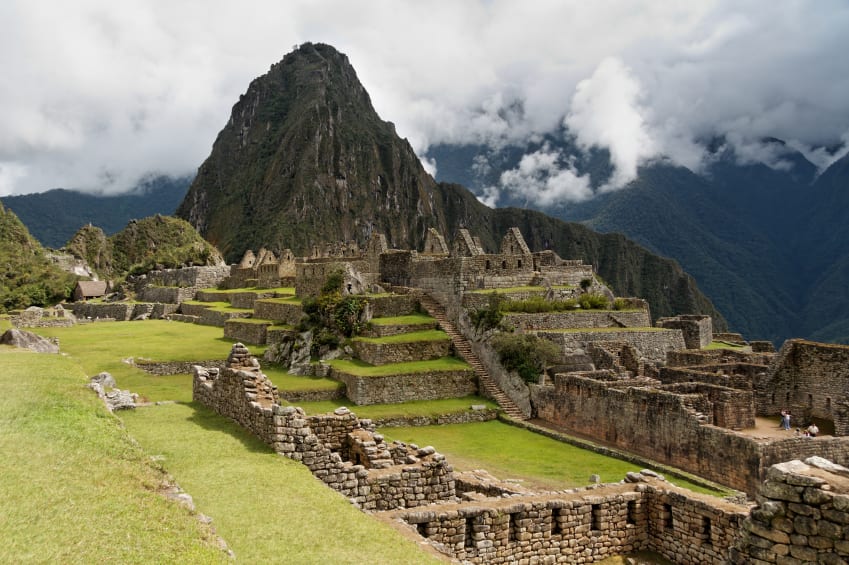
-
Table of Contents
Unveiling the tapestry of global traditions.
Introduction
Cultural Heritage Tourism is a form of travel that focuses on exploring and experiencing the richness of global traditions. It involves visiting destinations that are known for their cultural significance, such as historical sites, museums, festivals, and indigenous communities. This type of tourism allows travelers to immerse themselves in the local culture, traditions, and customs of a particular region or country. By engaging with the cultural heritage of different communities, tourists gain a deeper understanding and appreciation for the diversity and uniqueness of global traditions.
The Importance of Cultural Heritage Tourism in Preserving Global Traditions
Cultural heritage tourism is a form of travel that focuses on exploring and experiencing the richness of global traditions. It involves visiting historical sites, participating in cultural events, and immersing oneself in the local customs and practices of a particular region or country. This type of tourism is not only a means of entertainment and leisure but also plays a crucial role in preserving and promoting global traditions.
One of the primary reasons why cultural heritage tourism is important is that it helps to preserve and protect the cultural heritage of a particular region or country. By attracting tourists to historical sites and cultural events, local communities are able to generate revenue that can be used for the maintenance and restoration of these sites. This financial support is essential for the preservation of cultural landmarks, artifacts, and traditions that might otherwise be neglected or forgotten.
Furthermore, cultural heritage tourism also serves as a means of promoting global traditions to a wider audience. When tourists visit a particular destination, they have the opportunity to learn about and appreciate the customs, rituals, and practices of the local community. This exposure to different cultures fosters a sense of understanding, respect, and appreciation for diversity. It allows tourists to gain a deeper understanding of the world and its various traditions, ultimately promoting a more inclusive and tolerant society.
In addition to preserving and promoting global traditions, cultural heritage tourism also has significant economic benefits. When tourists visit a destination, they contribute to the local economy by spending money on accommodations, transportation, food, and souvenirs. This influx of tourism revenue can have a positive impact on the livelihoods of local communities, creating job opportunities and stimulating economic growth. Moreover, cultural heritage tourism can also lead to the development of new businesses and industries, such as tour operators, local artisans, and traditional craftsmen, who can benefit from the increased demand for authentic cultural experiences.
Another important aspect of cultural heritage tourism is its role in fostering sustainable development. Many destinations that rely on cultural heritage tourism have recognized the need to balance economic growth with environmental conservation and social responsibility. Sustainable tourism practices, such as responsible waste management, energy conservation, and community engagement, are being implemented to ensure that the benefits of tourism are enjoyed by future generations. By promoting sustainable practices, cultural heritage tourism can contribute to the preservation of natural resources and the protection of cultural diversity.
In conclusion, cultural heritage tourism plays a vital role in preserving and promoting global traditions. It helps to preserve cultural landmarks and traditions by generating revenue for their maintenance and restoration. It also promotes a greater understanding and appreciation for diversity, fostering a more inclusive society. Additionally, cultural heritage tourism has significant economic benefits, stimulating local economies and creating job opportunities. Finally, cultural heritage tourism can contribute to sustainable development by promoting responsible tourism practices. By exploring the richness of global traditions through cultural heritage tourism, we can ensure that these traditions are preserved and celebrated for generations to come.
Uncovering Hidden Gems: Must-Visit Cultural Heritage Sites Around the World
Cultural Heritage Tourism: Exploring the Richness of Global Traditions
Uncovering Hidden Gems: Must-Visit Cultural Heritage Sites Around the World
Cultural heritage tourism offers a unique opportunity to delve into the richness of global traditions and explore the hidden gems that lie within various countries. These sites not only provide a glimpse into the past but also offer a chance to understand the cultural significance and historical importance of different civilizations. From ancient ruins to well-preserved architectural wonders, here are some must-visit cultural heritage sites around the world.
In South America, the ancient city of Machu Picchu in Peru stands as a testament to the Inca civilization. Nestled high in the Andes Mountains, this UNESCO World Heritage site offers breathtaking views and a chance to witness the architectural brilliance of the Incas. The intricate stonework and terraces that blend seamlessly with the natural landscape are a sight to behold.
Moving across the globe to Asia, the Angkor Wat temple complex in Cambodia is a marvel of Khmer architecture. Built in the 12th century, this sprawling site is the largest religious monument in the world. The intricate carvings and towering spires showcase the artistic prowess of the Khmer Empire and provide a glimpse into their religious beliefs.
In Europe, the Acropolis of Athens in Greece is a must-visit for history enthusiasts. Perched on a hill overlooking the city, this ancient citadel is home to several iconic structures, including the Parthenon. The Acropolis stands as a symbol of ancient Greek civilization and its influence on Western culture.
Heading to Africa, the Great Pyramids of Giza in Egypt are a testament to the grandeur and engineering prowess of the ancient Egyptians. These colossal structures have stood the test of time and continue to awe visitors with their sheer size and precision. Exploring the pyramids and the nearby Sphinx offers a chance to unravel the mysteries of this ancient civilization.
In the Middle East, the ancient city of Petra in Jordan is a hidden gem waiting to be discovered. Carved into the rose-red cliffs, this UNESCO World Heritage site is a marvel of Nabatean architecture. The intricate facades and rock-cut tombs provide a glimpse into the prosperous trading city that once thrived here.
Moving to North America, Chichen Itza in Mexico is a must-visit for those interested in the ancient Mayan civilization. The iconic El Castillo pyramid, also known as the Temple of Kukulcan, is the centerpiece of this archaeological site. The Mayans’ advanced knowledge of astronomy is evident in the precise alignment of the pyramid with the sun during the equinoxes.
Finally, in Oceania, the Easter Island statues, known as Moai, are a fascinating cultural heritage site. These massive stone figures, scattered across the remote island, are a testament to the ingenuity and craftsmanship of the Rapa Nui people. The mystery surrounding their creation and transportation continues to captivate visitors.
In conclusion, cultural heritage tourism allows us to explore the richness of global traditions and uncover hidden gems around the world. From the ancient ruins of Machu Picchu to the architectural wonders of Angkor Wat, these sites offer a glimpse into the past and provide a deeper understanding of different civilizations. Whether it’s the Acropolis of Athens or the Great Pyramids of Giza, each cultural heritage site has its own unique story to tell. So, pack your bags and embark on a journey to uncover the hidden gems of our global heritage.
Cultural Heritage Tourism: A Journey Through Time and Tradition
Cultural Heritage Tourism: Exploring the Richness of Global Traditions
Cultural heritage tourism offers a unique opportunity to delve into the rich tapestry of global traditions. It allows travelers to embark on a journey through time, immersing themselves in the customs, rituals, and artifacts that have shaped societies throughout history. This form of tourism not only provides a glimpse into the past but also fosters an appreciation for the diversity and interconnectedness of our world.
One of the key aspects of cultural heritage tourism is the preservation and promotion of historical sites. These sites serve as tangible reminders of the past, allowing visitors to witness firsthand the architectural marvels, artistic masterpieces, and technological advancements of bygone eras. From the pyramids of Egypt to the Great Wall of China, these landmarks stand as testaments to the ingenuity and creativity of our ancestors.
In addition to physical sites, cultural heritage tourism also encompasses intangible elements such as music, dance, and cuisine. These cultural expressions are deeply rooted in tradition and reflect the values, beliefs, and aspirations of a community. For example, flamenco in Spain, with its passionate rhythms and intricate footwork, is not just a dance but a reflection of the country’s history and identity. Similarly, the spices and flavors of Indian cuisine tell the story of a vibrant and diverse culture.
One of the benefits of cultural heritage tourism is its ability to foster cross-cultural understanding and appreciation. By immersing oneself in the customs and traditions of another culture, stereotypes and prejudices can be challenged and dismantled. Through interactions with locals, visitors gain a deeper understanding of the challenges and triumphs that shape a community’s identity. This exchange of ideas and perspectives promotes empathy and tolerance, ultimately contributing to a more inclusive and harmonious global society.
Furthermore, cultural heritage tourism has the potential to drive economic growth and development. By attracting visitors from around the world, communities can benefit from increased revenue and job opportunities. This, in turn, can lead to the preservation and restoration of historical sites, as well as the revitalization of traditional crafts and industries. By investing in cultural heritage tourism, countries can leverage their unique heritage to create sustainable and inclusive economies.
However, it is important to approach cultural heritage tourism with sensitivity and respect. The commodification of culture can lead to the exploitation and misrepresentation of traditions. It is crucial to involve local communities in the planning and management of tourism initiatives, ensuring that their voices are heard and their interests are protected. By prioritizing authenticity and sustainability, cultural heritage tourism can be a force for positive change, empowering communities and preserving their heritage for future generations.
In conclusion, cultural heritage tourism offers a window into the richness of global traditions. It allows travelers to explore historical sites, experience intangible cultural expressions, and engage in meaningful cross-cultural exchanges. By promoting understanding, driving economic growth, and fostering community empowerment, cultural heritage tourism has the potential to create a more interconnected and harmonious world. As we embark on this journey through time and tradition, let us remember to tread lightly, respecting and preserving the cultural heritage that makes our world so diverse and fascinating.
Conclusion
Cultural heritage tourism offers a unique opportunity to explore and appreciate the richness of global traditions. It allows individuals to immerse themselves in the history, art, music, cuisine, and customs of different cultures. By visiting heritage sites, museums, festivals, and participating in cultural activities, tourists can gain a deeper understanding and appreciation for the diverse traditions that make up our world. Cultural heritage tourism not only promotes cultural exchange and understanding but also contributes to the preservation and economic development of local communities. Overall, it is a valuable form of tourism that allows individuals to explore and celebrate the richness of global traditions.




